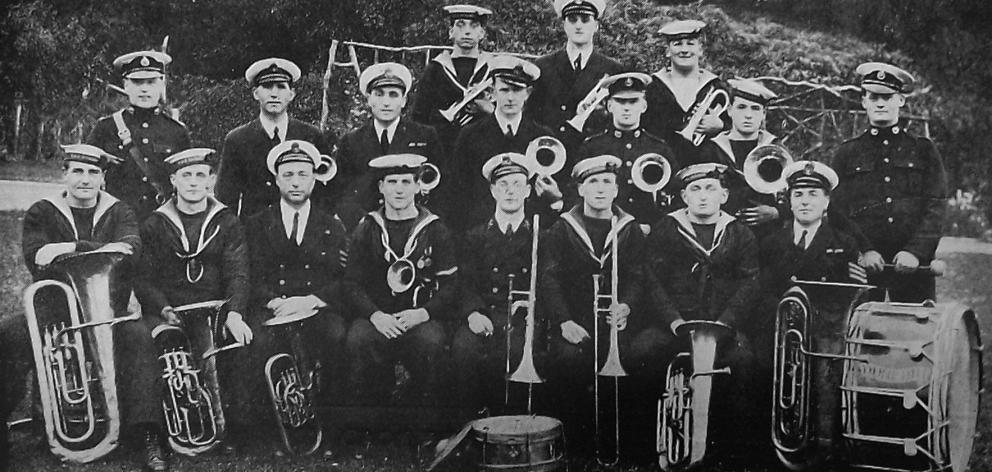
HMS Dunedin, flagship of the New Zealand Naval Division, arrived at Dunedin yesterday from Akaroa, and was berthed at the Rattray street wharf shortly after 10am.

When the cruiser steamed past the Victoria wharf a fair number of citizens was present to extend a welcome to the ship’s company. The weather was very cold, and light, misty rain did not tend to brighten the scene. Nevertheless, HMS Dunedin’s crew appeared to be cheerful, and were eager to renew acquaintances after an absence of close on 12 months. The ship entered the Heads shortly after 8am and made an imposing spectacle as she steamed through the Victoria Channel under the charge of the harbourmaster (Captain J. MacLean). The cruiser was capably handled in the basin between the Rattray street and Birch street wharves, and was moored without the least difficulty. The cruiser’s band, stationed amidships, played several selections while the ship was being berthed.
Māori publications catalogued
In the current issue of Nature there is a notice on ‘‘A Bibliography of Printed Maori to 1900.’’ This is No 7 of the Dominion Museum bibliographies. ‘‘The bibliography,’’ says Nature, contains nearly 1100 items. The mere number however, does not nearly represent the amount of labour which has been expended in its compilation, as each entry is annotated with information additional to the formal particulars, and in many cases some indication is given of the character of the contents. The author has departed from the strict rule followed by many bibliographers, and has included items which he has not personally examined, but as such entries are indicated those who use the bibliography will in these cases be on their guard. The entries are in chronological order - a disadvantage if the date of the book about which information is sought is not known, or if it is undated, but as the entries are naturally of a very miscellaneous character, ranging from Bibles and prayers to newspapers, dictionaries and Government documents, any satisfactory classification would be a matter of extreme difficulty. In the preface, Dr Williams reviews previous attempts at Maori bibliography, and his introduction is a valuable account of Maori presses in which the work of the various missionary societies. The first book to be printed in the language was ‘‘The New Zealander’s First Book,’’ by Thomas Kendall, the missionary (1815), for the instruction of the Natives.
Japan one to watch
Sir Herbert Russell (Reuter’s war correspondent) writes: ‘‘To appreciate the profound significance of the admirals’ conference at Singapore it is necessary to examine Japan’s naval programme, which sanctions the construction of eight first-class and three second-class cruisers all of 36 knots, 10 powerful sea-keeping destroyers and an aircraft carrier. We still regard Japan as a good friend, and take it for granted that her naval activity is not directed against our interests. A change is coming over the spirit of Japan. Since the passing of the Anglo-Japanese Alliance there has been a perceptible cooling off in her sentiment towards Britain, while the full significance of the recent Russo-Japanese Treaty is not understood in Britain. Japan has the clearest perception of her needs. She is building warships because she realises that she must have an outlet for her growing population.’’
- ODT, 17.4.1925 (Compiled by Peter Dowden)












